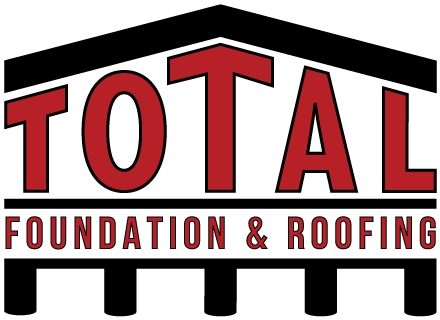Table of Contents
ToggleWhy Commercial Roof Emergencies Demand Immediate Action
Commercial emergency roof repair is a critical service that can save your business from catastrophic damage and costly downtime. When disaster strikes your commercial building, every minute counts.
What qualifies as a commercial roofing emergency:
– Active leaks causing interior damage or safety hazards
– Storm damage with missing shingles, torn membranes, or structural compromise
– Ponding water that threatens roof collapse or accelerated deterioration
– HVAC equipment damage creating roof penetrations
– Ice or snow buildup exceeding your roof’s load capacity
Typical emergency response timeline:
1. 0-2 hours: Initial damage assessment and temporary containment
2. 2-4 hours: Professional crew arrival with emergency materials
3. 4-24 hours: Temporary weatherproofing and structural stabilization
4. 1-7 days: Permanent repairs once conditions allow
Your commercial roof may only comprise 30% of your building envelope, but it protects 100% of your business assets, operations, and occupants. A single emergency can shut down operations, damage inventory, and create liability issues that cost far more than immediate repairs.
I’m Daniel Sowell, owner of Total Foundation & Roofing Repair, and I’ve spent over 18 years helping Texas Hill Country businesses recover from roofing emergencies. Through countless after-hours calls and storm responses, I’ve seen how quick action during commercial emergency roof repair situations can mean the difference between a manageable repair and a total business shutdown.

Recognize the Emergency: Causes & Warning Signs
Picture this: You arrive at your office on a Monday morning to find water dripping onto your computer servers, or worse yet, pooling around expensive equipment. What seemed like a minor roof issue on Friday has transformed into a full-blown crisis over the weekend.
The key to protecting your business lies in understanding when a roof problem crosses the line from “routine maintenance” to “commercial emergency roof repair territory.” Not every drip requires a middle-of-the-night phone call, but certain warning signs demand immediate action.
A roof leak becomes an emergency the moment it threatens your operations. Even a seemingly small leak can shut down your business if water reaches electrical systems, damages inventory, or creates safety hazards for employees and customers.

Here are the five warning signs that should have you reaching for your phone immediately:
- Active water dripping or pooling inside your building
- Visible sagging in your roof deck or dropping ceiling tiles
- Torn membrane or exposed insulation on flat roofs
- Standing water that’s been sitting for more than 48 hours after rain
- Water around rooftop equipment like HVAC units or vents
When you notice these signs, time is working against you. Every hour you wait increases the potential for structural damage, mold growth, and business disruption.
If you suspect a leak but can’t pinpoint its source, our specialized roof leak detection services use advanced technology to locate problems before they become full-scale emergencies.
Most Common Causes of Commercial Roofing Emergencies
After nearly two decades of emergency roof calls across the Texas Hill Country, weather tops the list every single time. Our region’s combination of severe storms, temperature swings, and occasional hail creates perfect conditions for roofing emergencies.
Hail and wind damage cause more emergency calls than anything else. High winds are equally destructive, peeling back membrane sections or launching roofing materials into neighboring properties.
Debris impact from falling tree branches or wind-blown objects creates instant roof penetrations. Aging roofing materials can fail suddenly after years of gradual deterioration, often during the worst possible weather conditions.
Freeze-thaw cycles are particularly brutal in our area. When temperatures swing from freezing to 70 degrees in a matter of hours, roofing materials expand and contract, eventually opening seams and cracking flashings.
Early Warning Signs You Can Spot From Ground Level
You don’t need to climb onto your roof to spot trouble brewing. During your regular property walks, keep an eye out for these telltale signs:
Bubbling or blistering on flat roof surfaces means trapped moisture is building pressure underneath the membrane. Loose flashing around roof edges and penetrations becomes visible as metal pieces start lifting or separating.
Overflowing gutters or poor drainage creates standing water that stresses your roof structure. Musty odors inside your building often signal moisture problems before you see actual water damage.
Water stains or discolored rings on interior ceilings provide clear evidence that water is finding its way through your roof system. Even small stains can indicate extensive hidden damage within your roof assembly.
Commercial Emergency Roof Repair: Rapid Response Timeline
When disaster strikes your commercial roof, every minute feels like an hour. Professional commercial emergency roof repair services follow proven protocols designed to get your building secured fast.
Think of emergency roof repair like calling 911—there’s a system in place to help you when you need it most. Our 24/7 dispatch connects you directly with qualified technicians who understand that your business can’t wait until Monday morning. Most professional services guarantee arrival within 2-4 hours.

The initial response focuses on immediate damage assessment and temporary containment while planning for permanent restoration once conditions allow.
Phase 1 happens in those crucial first two hours. Our crew arrives with emergency tarps and begins damage assessment while prioritizing safety. We’re looking for major openings that need immediate covering, water diversion needs, and any structural concerns.
Phase 2 brings specialized materials within the first 24 hours. This is when we deploy comprehensive temporary weatherproofing systems that can hold for weeks if necessary. We also coordinate with your insurance adjuster during this phase.
Phase 3 focuses on permanent restoration once the weather cooperates and materials arrive. This typically happens within a week, depending on the extent of damage and material availability.
Our emergency roof repair services keep fully equipped response vehicles ready because we know emergencies don’t schedule appointments.
First 60 Minutes Checklist for Commercial Emergency Roof Repair
What you do in that first hour after finding roof damage can make the difference between a manageable repair and a business-threatening disaster.
Safety comes first, always. Get people away from active leaks or any area where you notice structural damage. Water and electricity don’t mix, so shut off power to any circuits near the leak area.
Move valuable equipment and inventory out of harm’s way immediately. Document everything with your smartphone camera. Take photos and videos from multiple angles, recording the time and date.
Call a qualified commercial emergency roof repair service immediately—don’t wait to see if the leak stops on its own.
Keep essential emergency supplies on-site: heavy-duty tarps, rope or bungee cords, buckets for catching water, plastic sheeting, flashlights, and an emergency contact list.
Temporary vs. Permanent Fixes in Commercial Emergency Roof Repair
Understanding the difference between emergency band-aids and permanent solutions helps you make smart decisions when you’re under pressure.
Professional tarping represents our most common temporary solution. We use commercial-grade tarps with reinforced edges and proper anchoring systems that can protect your building for weeks if needed. However, tarps need regular monitoring and eventual replacement.
Emergency sealants work well for active leaks around penetrations or small membrane splits. Drain clearing addresses ponding water emergencies by restoring proper water flow off your roof.
Permanent restoration takes a different approach entirely. Complete membrane replacement addresses extensive damage with new roofing systems backed by full manufacturer warranties. Structural repairs become necessary when damage affects decking, insulation, or support systems.
| Repair Type | Timeline | Duration | Best For |
|---|---|---|---|
| Emergency Tarp | 2-4 hours | 2-8 weeks | Large openings, storm damage |
| Sealant Application | 1-2 hours | 1-6 months | Small leaks, penetration failures |
| Membrane Patch | 2-6 hours | 6-24 months | Punctures, minor tears |
| Complete Restoration | 1-7 days | 15-30 years | Extensive damage, system failure |
Safety, Business Continuity & Contractor Selection
When your commercial roof fails during a storm at 2 AM, safety becomes your top priority—right alongside keeping your business running. Commercial emergency roof repair situations create unique challenges that require professional expertise, not heroic DIY attempts that could end in disaster.
Professional emergency crews understand that damaged roofs are inherently dangerous. They arrive equipped with OSHA-compliant fall protection systems and know how to establish site safety perimeters that protect your employees and customers from falling debris.

Emergency repairs often happen in challenging conditions—during storms, at night, or when structural damage makes normal safety procedures more complex. This is exactly why you should never attempt DIY repairs on commercial roofs.
Professional crews also handle the electrical safety concerns that many building owners overlook. Water and electricity create deadly combinations, and experienced contractors know how to work safely around HVAC equipment and electrical components.
Our commercial roofing services maintain strict safety protocols and carry comprehensive insurance coverage specifically for emergency response situations.
How Pros Keep Operations Running During Repairs
Experienced contractors understand your business can’t simply close its doors while repairs happen. They’ve developed proven strategies to minimize operational disruption while still completing quality repairs.
Phased work scheduling represents the gold standard for maintaining business continuity. Instead of tackling your entire roof at once, professional crews complete repairs in carefully planned sections.
Off-peak scheduling moves the noisiest and most disruptive work to evenings, weekends, or other low-activity periods. Interior protection systems allow normal operations to continue even while active repairs happen overhead.
Clear communication protocols keep everyone informed about repair progress, safety requirements, and any temporary access restrictions.
What to Look For in a Commercial Emergency Roofing Contractor
Choosing an emergency contractor while water is dripping into your office requires quick decision-making, but that doesn’t mean you should skip due diligence.
True 24/7 emergency response capability means more than just an answering service. Look for contractors who maintain dedicated emergency crews and guarantee specific response times.
Proper licensing and insurance coverage becomes critically important during emergency work. Verify that contractors carry commercial general liability insurance and workers’ compensation coverage adequate for your project size.
Experience with your specific roof type and building construction makes a huge difference in emergency situations. Local knowledge of weather patterns, building codes, and material suppliers enables faster, more effective responses.
Red flags to avoid include door-to-door solicitors who appear after storms, contractors demanding full payment upfront, or anyone who can’t provide proper licensing and insurance documentation.
Prevention, Costs & Insurance Essentials
The old saying “an ounce of prevention is worth a pound of cure” couldn’t be truer when it comes to commercial roofing. While we can’t prevent every emergency, smart business owners know that regular maintenance dramatically reduces both the frequency and severity of roofing crises.
Think of it this way: would you rather spend $500 twice a year on professional inspections, or $15,000 on emergency repairs when your roof fails during the next big storm?
Bi-annual professional inspections are your first line of defense against roofing emergencies. We recommend scheduling these in spring and fall—right before the seasons that typically bring our most challenging weather.

Your preventive maintenance program should include quarterly drain cleaning to prevent ponding water, annual membrane evaluations to catch small problems before they become big ones, and prompt repairs of minor issues.
One of the most overlooked aspects of prevention is proper documentation. Keep records of all maintenance activities, repairs, and inspections. Our commercial roof cleaning services help prevent many emergency situations by maintaining proper drainage.
For deeper insights into emergency repair best practices, the IKO learning center provides valuable insights into proper emergency response procedures backed by industry research.
Building an Emergency Roof Budget & Understanding Costs
Commercial emergency roof repair costs typically run 2-3 times more than planned maintenance. Why? Because emergencies don’t happen during convenient business hours with perfect weather conditions.
When your roof starts leaking at 2 AM during a thunderstorm, you’re paying for premium response fees, expedited materials, and after-hours labor. These surcharges typically add 20-50% to standard repair costs.
Square footage pricing varies significantly based on damage extent and your roof type. Small repairs under 100 square feet typically run $350-450, while larger damaged areas require on-site evaluation.

Don’t forget to budget for temporary protection costs, potential permit fees for major structural work, and business interruption costs—how much revenue do you lose for each day your operations are disrupted?
The smart approach is to establish an emergency roof fund equal to 2-3% of your building’s replacement value.
Documenting Damage for Smooth Insurance Claims
Insurance companies live and breathe documentation, and emergency roof situations are no exception. The difference between a smooth claim process and months of frustrating back-and-forth often comes down to how well you document the damage from day one.
Start with immediate photo documentation before anyone touches anything. Take pictures from multiple angles, showing both the roof damage and any interior effects.
Video walkthroughs provide context that photos can’t capture. Create detailed incident reports documenting exactly when and how you found the damage.
Professional contractor assessments carry significant weight with insurance companies. Written evaluations from qualified contractors provide the technical expertise that adjusters rely on.
Working with insurance adjusters requires patience and organization. Schedule their visit as soon as possible after damage occurs, but don’t wait for them to begin emergency repairs if safety is a concern.
Provide complete documentation packages with organized photos, reports, and contractor assessments. Keep detailed records of every conversation with insurance representatives.
Frequently Asked Questions about Commercial Emergency Roof Repair
When you’re dealing with a roofing emergency, questions race through your mind faster than water through a damaged membrane. Let me address the three questions that come up most often during commercial emergency roof repair situations.
Is a small leak really an emergency?
Here’s the honest truth: any leak that threatens your business operations deserves emergency attention. I’ve seen too many “small” leaks turn into major disasters overnight, especially when they’re near electrical panels or sensitive equipment.
What transforms a minor drip into a true emergency? Water reaching electrical systems tops the list – this creates immediate safety hazards and potential fire risks. Active dripping that disrupts operations also qualifies, particularly in retail spaces or areas with expensive inventory.
Signs of structural damage like sagging ceiling tiles or visible water stains indicate problems beyond simple surface leaks. The reality is that small leaks rarely stay small, especially during extended rainfall.
How fast can a crew arrive after I call?
Most professional commercial emergency roof repair services guarantee response times between 2-4 hours for genuine emergencies. However, several factors affect how quickly we can get to your location.
Critical emergencies involving structural damage or major flooding often receive priority response within 1-2 hours. Geographic location plays a role – properties closer to our Kerrville base typically see faster response times.
Weather conditions also matter, as severe storms that create emergencies can also make travel dangerous for repair crews. During widespread storm damage affecting multiple businesses, professional services maintain networks of certified contractors to handle increased demand.
Will a temporary fix void my roof warranty?
This concern keeps many business owners awake at night, but here’s the reassuring news: properly executed temporary emergency repairs by qualified contractors typically don’t void roof warranties. Most manufacturers understand that emergency situations require immediate action to prevent catastrophic damage.
The key is following manufacturer-approved procedures during emergency repairs. This means using compatible materials and hiring certified contractors who understand your specific roof type.
Documentation becomes crucial for warranty protection. Take photos before and after emergency work, keep all receipts, and notify your warranty provider as soon as conditions allow.
Never delay necessary emergency work due to warranty concerns. Preventing further damage takes priority over warranty considerations.
Conclusion
When your commercial roof decides to throw a tantrum in the middle of a Texas thunderstorm, you’ll be grateful you took the time to understand commercial emergency roof repair before disaster struck. These situations never happen at convenient times, but knowing what to expect and having a plan in place transforms a potential catastrophe into a manageable problem.
Think about it this way: your roof might only represent 30% of your building’s exterior, but it’s working overtime to protect 100% of everything that matters to your business. Your equipment, inventory, employees, and customers all depend on that barrier between them and whatever Mother Nature decides to throw at the Texas Hill Country.
I’ve been helping business owners steer roofing emergencies across Kerrville, Fredericksburg, Comfort, and the surrounding Hill Country for over 18 years now. Every emergency call teaches me something new about how quickly a small problem can snowball into a business-threatening crisis. The difference between a minor headache and a major disaster usually comes down to how fast you act and who you call for help.
At Total Foundation & Roofing, we’ve built our emergency response system around one simple truth: your business can’t wait for normal business hours when water is pouring through your ceiling. That’s why our crews stay ready around the clock, with fully equipped trucks and the experience to handle whatever emergency your roof throws at us.
The smartest business owners don’t wait for emergencies to find a reliable roofing contractor. They build relationships before they need them, schedule regular inspections, and keep emergency contact information where their entire team can find it. This proactive approach saves money, reduces stress, and often prevents emergencies altogether.
Ready to protect your business investment? Request your free estimate today and let’s develop a maintenance plan that keeps your roof performing reliably through every season. We’ll help you spot potential problems before they become 2 AM emergency calls.
When your roof goes rogue, we’re here to bring it back in line – 24 hours a day, 7 days a week, 365 days a year. Because in the roofing business, there’s no such thing as “sleeping in” when our neighbors need help.




